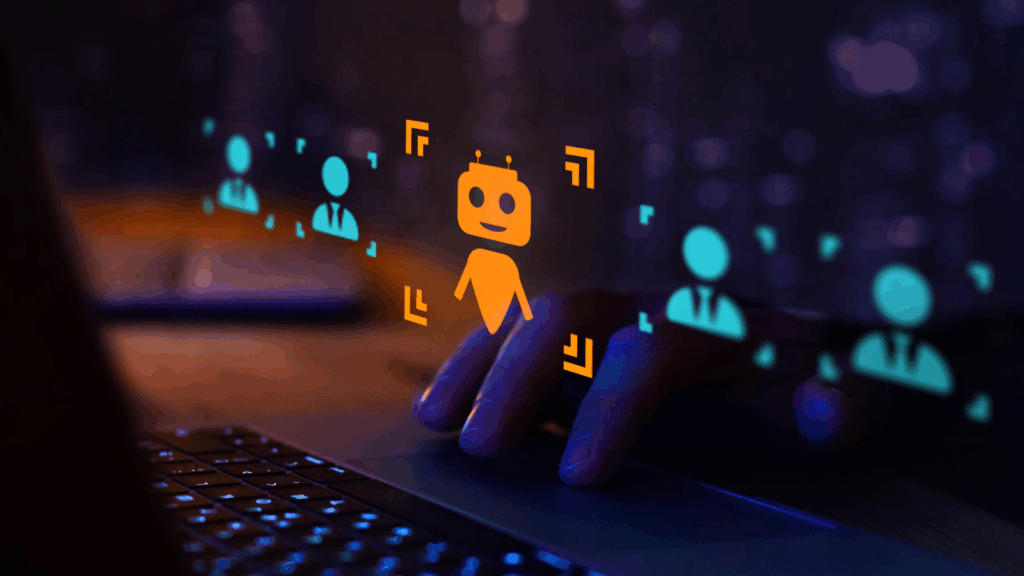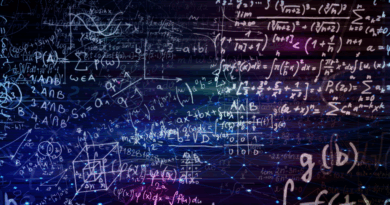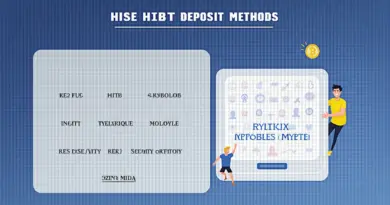The AI Economy’s Breaking Point: When Job Loss Triggers Collapse
Every now and then, two independent variables converge in such a profound and terrifying way that it doesn’t just rewrite the rules; it burns the whole playbook.
That’s where we’ve arrived with AI.
On one side is artificial intelligence itself: a rapidly advancing technology, tearing through tasks once thought too complex, too human, even too sacred to be automated.
On the other is the economy: a delicate machine powered by consumer income and employment – and one that can only survive so much disruption before it fractures.
But as AI threatens to upend businesses and industries around the world, disruption is the name of this game. This tech is already designing ad campaigns, diagnosing patients, drafting legal briefs…
In some cases, it’s doing it all faster, cheaper, and better than the humans that came before it.
And after months of research and modeling, I believe that AI is likely to eliminate 20- to 30 million American jobs by 2035 – a point of collapse for the U.S. economy.
This is shaping up to be the most important economic story of our time – and it’s unfolding faster than anyone expected…
AI Job Loss Is Accelerating: 30 Million at Risk by 2035
Let’s start with the brute facts.
Data from the Bureau of Labor Statistics shows that current total U.S. payroll employment measures ~160 million jobs.
Every year, automation gets better, cheaper, and more widely deployed. And artificial intelligence – especially the newest wave of agentic, multi-modal, voice-native models – is now capable of replacing both repetitive labor and a growing portion of cognitive white-collar work.
According to research from OpenAI, McKinsey, Goldman Sachs, and others, the jobs most exposed fall into three categories.
High-Risk (50–100% automatable in 10 years):
- Administrative support: 8 million jobs → ~6M at risk
- Customer service & call centers: 4M → ~3.5M at risk
- Fast food & self-checkout: 5M → ~3M at risk
- Transportation (drivers, dispatch): 4M → ~2M at risk
That’s already ~15 million jobs gone…
Medium-Risk (20–50% automatable):
- Retail, finance, legal services, manufacturing, education
→ another 8- to 12 million plausibly displaced
Low-Risk (hard to replace):
- Healthcare, skilled trades, construction
→ minimal short-term impact and marginal job loss
Total likely jobs displaced by 2035: 20- to 30 million
This isn’t a scare tactic. It’s a rational projection based on economic analysis, historical precedent, and current technology trajectories. In fact, it is already happening in the form of AI call centers, self-serve retail, and autonomous vehicle pilots. Many companies are actively restructuring or reducing staff in certain areas due to AI’s capabilities.
And what we’re seeing today is just the beginning…
What Happens When the U.S. Economy Loses 20% of Its Jobs?
Now, here’s the even more chilling part: we ran the numbers to figure out how many job losses the U.S. economy could endure without systemic failure. We weren’t trying to match the AI estimates – we were just modeling where the wheels fall off.
And the answer we arrived at?
Roughly 20- to 25% structural unemployment, or 20- to 30 million people.
Any more than that, and we think the system enters a death spiral – not immediately but over the course of months and years as mass consumer demand collapses, tax revenues shrink, debt balloons, and political instability rises.
After all, in a capitalist economy, jobs create income. Income fuels spending. Spending drives business revenue. And revenue supports more jobs.
Pull 25 million people out of that loop, and the flywheel slows. Profits fall. Companies contract. Unemployment begets more unemployment.
Yes, the rich will keep spending. Yes, AI will create new wealth. But here’s the thing: capital can’t consume like labor can. A billionaire might buy five Teslas. But millions of middle-class Americans buy millions of used Toyotas.
At some point, even the rich start to feel the chill.
Why the Rich Win as AI Destroys Middle-Class Jobs
And yet, thanks to AI…
Even as the economy hollows out for most people, the top 10% – and especially the top 1% – will probably experience a decade of unprecedented wealth acceleration.
Here’s the breakdown.
Who owns the AI?
- The top 10% of households own ~89% of all U.S. stocks.
- They also own the startups, data centers, infrastructure, land – and, increasingly, the robots.
How fast will their wealth grow?
We modeled a 10% compound annual growth rate (CAGR) for the top 10%, based on:
Currently, that cohort comprises about $112 trillion in wealth. If their wealth compounds at 10% per year, they’ll be worth $292 trillion by 2035.
That’s $180 trillion-plus in new wealth.
Meanwhile, the bottom 90%? Flat… or worse.
Given pervasive job loss, stagnant working class salaries, lost worker leverage due to AI, lack of AI asset ownership, and more, we believe the bottom 90% may see their wealth shrink by 1% per year over the next 10 years.
That portion of the population currently has a net worth of about $48 trillion. If that shrinks by 1% per year, it’ll measure $43 trillion in wealth by 2035.
That’s a loss of $5 trillion… while the upper 10% make $180 trillion.
If we thought the wealth gap was bad now, it only stands to get worse in the Age of AI.
The Wealth Singularity: When Capital Replaces Labor
We are heading toward what we call a “Wealth Singularity” – a point where the rich not only own most of the economy but the economy’s future.
Imagine:
- Robots, owned by venture capital, cooking your food
- AI, coded by hedge fund-backed teams, doing your taxes
- Autonomous trucks delivering goods from warehouses owned by real estate investment trusts (REITs)
- All profits flowing to investors while human labor is increasingly eliminated
The old labor-capital dynamic breaks. If you don’t own the capital, you don’t participate. The labor class loses. The capital class wins.
It’ll be the biggest transfer of wealth ever from the labor class to the capital class.
Now, can the rich keep the economy running?
In the short term, yes.
The top 10% (those making $250,000-plus annually) account for nearly half of all consumer spending in the U.S., according to Moody’s Analytics.
We expect their AI-fueled wealth boom will support luxury demand, asset prices, and some service industries as they buy robot butlers, AI tutors, personalized medicine, and virtual mansions.
But in the long term…
An economy without a middle class is like a rocket without fuel. It might keep rising for a bit on momentum – but eventually, it stalls, tips, and crashes.
That’s why ~20- to 25% unemployment is the maximum sustainable threshold. Beyond that, we’d face:
- Social unrest
- Political instability
- Mass protests
- Riots
- Asset seizures
- And eventually… major structural reform or collapse
Profit from the AI Economy Even While Jobs Disappear
So, what does this mean for you?
It means there’s only one rational response to this brewing macroeconomic superstorm:
You must invest in the AI economy.
And not just any stocks – not “tech” broadly or the old software companies pretending to be AI.
You need to own the platforms, infrastructure, and picks and shovels behind the AI revolution.
Those are the companies that will capture the productivity gains, own the intellectual property, rent out the models, provide the chips, lease the robots, and keep compounding – regardless of whether 30 million jobs vanish or not.
We’re talking:
- Foundational AI companies: think Nvidia (NVDA), AMD (AMD), Broadcom (AVGO), and Marvell (MRVL)
- Applied AI and robotics firms: Tesla (TSLA), Palantir (PLTR), UiPath (PATH), and Symbotic (SYM)
- AI infrastructure plays: Arista Networks (ANET), MP Materials (MP), Constellation (CEG), Cisco (CSCO), Oracle (ORCL), and more
These companies are likely to be the only ones compounding real earnings while the rest of the market flails.
Here’s How to Invest as AI Reshapes Capitalism
Right now, we’re staring into the mouth of a transformation unlike anything capitalism has seen.
We can’t stop the coming storm. But we can build portfolios that survive it.
Over at TradeSmith, CEO Keith Kaplan just unveiled what he believes is the company’s biggest financial breakthrough in 20 years…
A new way to potentially double your money, by foreseeing the biggest jumps on 5,000 stocks, to the day, with 83% accuracy.
In rigorous backtesting, it turned every $10,000 into $85,700, crushing the S&P 500 by an average of 108%, even during the longest bull market ever… and during the biggest selloffs.
Keith calls this “Green Day” investing. And since this system first went live in January, you could have doubled your money six different times with its recommendations.
With AI steering the U.S. economy toward a Wealth Singularity, this “Green Day” investing method could help you rewrite your financial future.
Learn more now – because Keith’s system suggests a rapid-fire money-making opportunity could begin as soon as tomorrow, July 30.
The post The AI Economy’s Breaking Point: When Job Loss Triggers Collapse appeared first on InvestorPlace.






